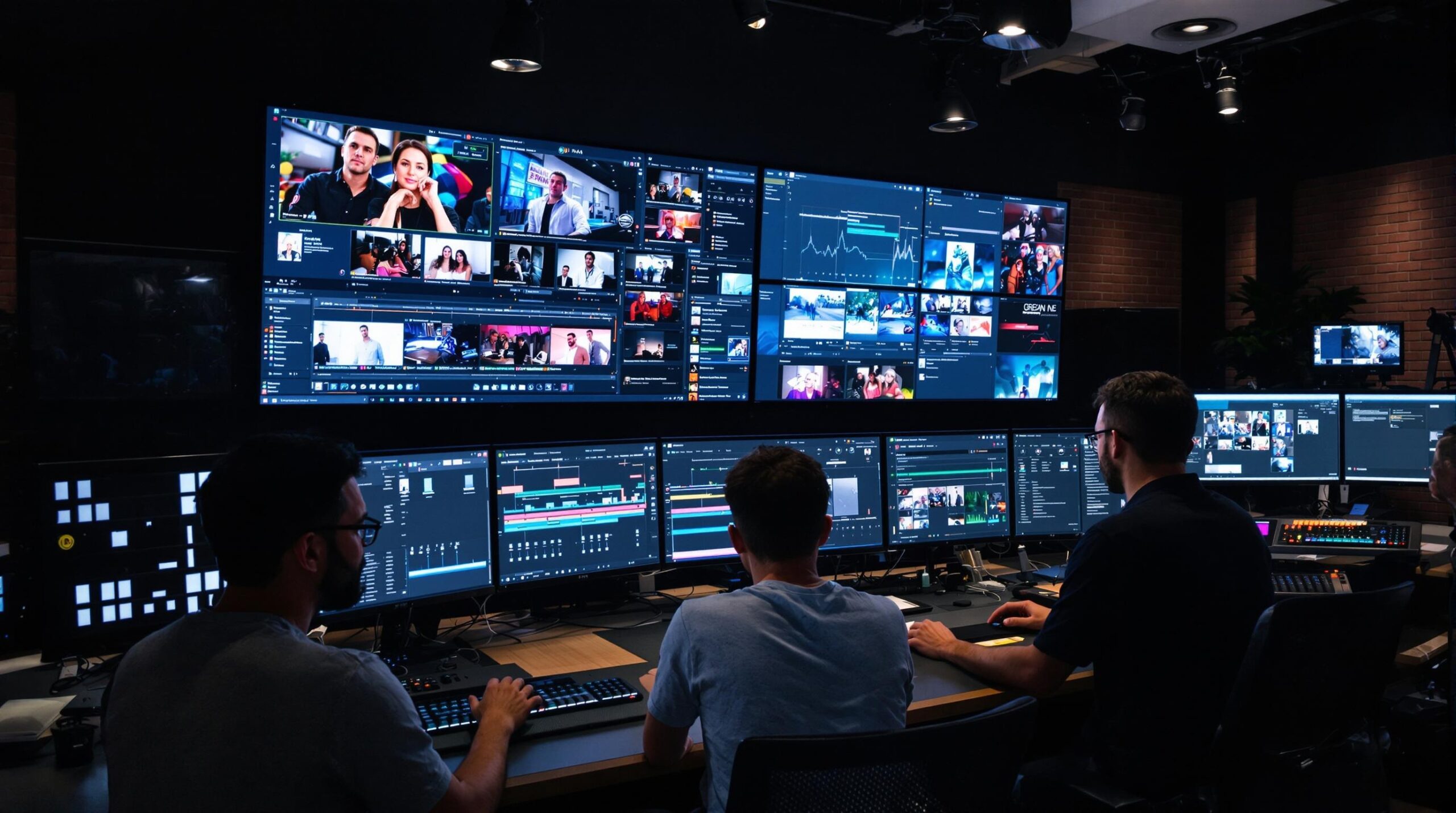Artificial intelligence has transformed many aspects of modern life, but few industries feel its impact quite like Hollywood does today. As AI tools become integrated into the film editing process, creators and studios must adapt to a dramatically shifting landscape. Understanding this revolution, its workflow implications, and the new opportunities it provides is vital for filmmakers and audiences alike.
How AI Technology Integrates with Film Editing
AI technology enhances traditional editing by automating repetitive processes and offering powerful new creative tools. Previously, editors manually sifted through hours of footage, searching for usable takes and editing clips to create emotional impact. AI can now analyze video data, recognize patterns, and suggest optimal snippets or sequences with breathtaking speed and precision. Editors can focus more on creative decisions while leaving routine sorting and categorization to their digital assistants.
Machine learning algorithms analyze camera angles, lighting, dialogue, and even actor emotions to recommend edits that align with the narrative tone. Tools like Adobe Sensei and Blackmagic’s DaVinci Resolve utilize AI to enable more intelligent scene detection, noise reduction, and color correction. As filmmakers embrace these innovations, movies undergo more refined post-production, often on tighter schedules and reduced budgets.
The Acceleration of Post-Production Timelines
Film editing was once a labor-intensive process, often stretching months, particularly for big-budget projects. AI’s ability to handle raw tasks expedites these workflows significantly. By identifying the best takes or detecting continuity errors, AI reduces the time spent in the editing suite.
This acceleration brings tangible benefits for production schedules. Studios can release content faster, which is vital in today’s content-hungry streaming landscape. Directors and producers gain more time to iterate on creative decisions, transforming the editorial process into a more dynamic and collaborative environment. As technology advances, the pressure to deliver content quickly while maintaining quality only increases, making AI an essential tool in the editor’s arsenal.
Enhancing Creativity Through AI Assistance
Rather than replacing the human touch, AI augments an editor’s creative authority. With tedious tasks offloaded, editors can invest their energy in story structure, pacing, and emotional resonance. AI-driven suggestions can inspire edits that editors may have overlooked, sparking creative discussions among the team.
Tools now exist that generate automatic storyboards, identify thematic motifs across hours of footage, or even suggest alternative scene orders to improve narrative flow. These advances don’t just offer shortcuts—they open new artistic avenues previously constrained by time or human fatigue. Editors become storytellers first, empowered by algorithmic insights rather than ruled by them.
New Career Opportunities and Challenges
The integration of AI in film editing presents both opportunities and concerns for professionals. As tasks like clipping or rough-cut assembly become automated, editors must develop new skills to remain relevant. Expertise in AI-driven software, data management, and creative judgment grows more valuable. Educational programs and training workshops are adapting curricula to help future editors thrive in this hybrid digital landscape.
However, apprehensions exist around job displacement. Routine positions may disappear, especially for entry-level or assistant editors. Hollywood unions and advocacy groups closely monitor these changes, pushing for ethical guidelines on the use of AI in creative labor. Ultimately, the rise of AI highlights the need for editors to strike a balance between technical proficiency and uniquely human storytelling instincts.
Transforming Audience Expectations and Experiences
The AI revolution not only impacts those behind the scenes, but it also shapes what Hollywood audiences experience on their screens. Faster editing processes enable quicker turnaround on serialized content, meeting viewers’ growing appetite for fresh stories. Enhanced color correction, upscaling, and restoration tools deliver more vibrant visuals and pristine audio, even in older or damaged source material.
Artificial intelligence also enables new types of interactive and personalized viewing experiences. Some streaming platforms experiment with AI-generated edits tailored to individual tastes or age ratings. As technology progresses, viewers may enjoy movies that adapt dynamically to their emotional reactions, tracked via smart devices. These innovations promise to blur boundaries between creator intent and audience participation.
Ethical Implications and Artistic Integrity
Widespread AI adoption raises vital concerns around artistic integrity and decision-making. An algorithm’s influence on editing risk, homogenizing film styles, or diminishing a director’s original vision. Automated tools could inadvertently introduce bias or reinforce stereotypes, especially without careful oversight.
Hollywood must establish clear guidelines on where and how AI can assist in creative projects. Transparent communication between studios, creators, and audiences is crucial to maintain trust in the editing process. Many leading filmmakers advocate keeping humans in ultimate control, using AI as an enhancer rather than a replacement for nuanced artistry. These conversations will define the next era of film editing practice.
The Influence on Global Film Markets
Hollywood’s embrace of AI sets a precedent for filmmaking worldwide. International studios are adopting similar technologies, narrowing the gap in production value and post-production sophistication. Emerging filmmakers gain access to AI-powered editing tools through cloud-based platforms, democratizing a craft that was once limited by expensive hardware and deep pockets.
Cross-border collaborations grow easier as AI-powered software simplifies language translation, dubbing, and subtitles. This paves the way for more diverse stories to travel and resonate globally. With AI reducing cost barriers, independent filmmakers can now compete with studio giants, leading to a more varied and inclusive cinematic landscape.
Challenges Facing AI Film Editing
Despite remarkable advancements, some hurdles remain before AI-driven editing realizes its full potential. High-quality training data is essential for accurate algorithms, but privacy and licensing concerns complicate the collection of data. Editors also report unpredictable outcomes when relying solely on AI-generated edits, requiring persistent human intervention.
Technical glitches and software incompatibility slow adoption in some studios. Moreover, creative skills are hard to quantify or automate. AI may struggle to grasp context, tone, or cinematic tradition without the guidance of seasoned professionals. As technology matures, developers and filmmakers must work together to ensure smooth and reliable integration.
Moving Toward a Hybrid Future
Hollywood stands at the edge of a new era, blending human ingenuity with machine intelligence in film editing. AI will not replace the artist’s vision or intuition, but it serves as an unprecedented ally in the quest for compelling stories. This partnership changes workflows, opens new possibilities, and redefines what both audiences and filmmakers expect from cinematic storytelling.
As the technology develops, ethical guidelines, thoughtful integration, and transparent communication will secure artistic integrity. The film industry must commit to continuous learning and adaptation, ensuring all creative voices thrive amidst the technological revolution. AI is not just transforming how movies are edited—it is reshaping the very future of Hollywood.


